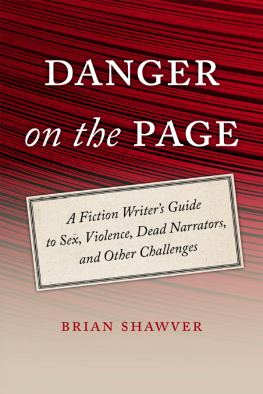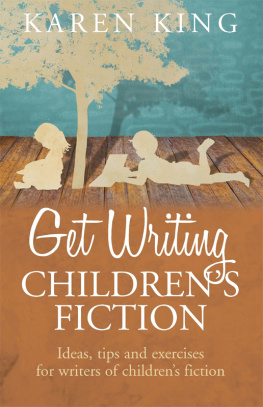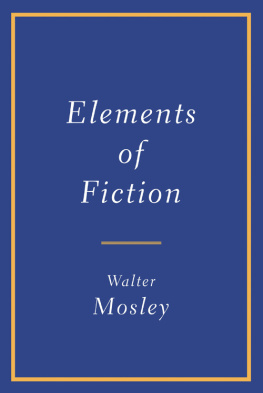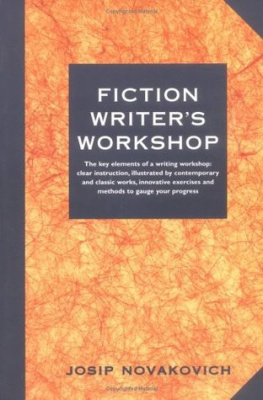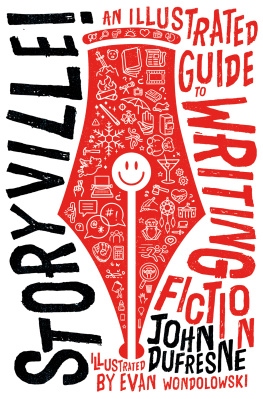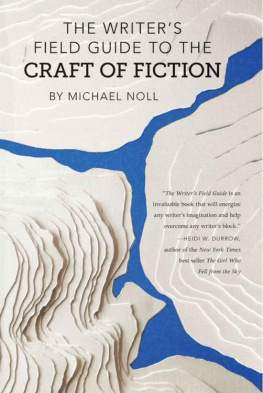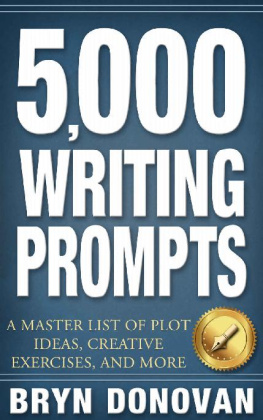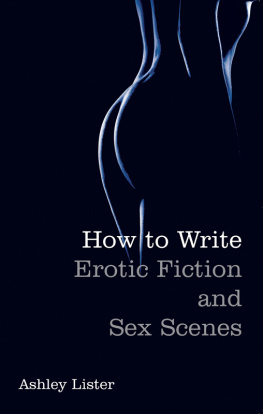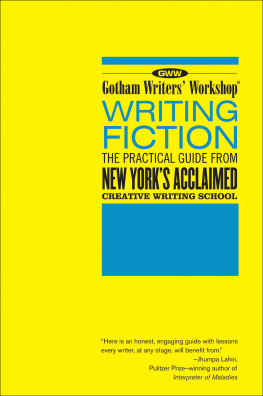DANGER
on the PAGE

A Fiction Writers Guide to Sex, Violence, Dead Narrators, and Other Challenges
BRIAN SHAWVER
ForeEdge
ForeEdge
An imprint of
University Press of New England
www.upne.com
2015 University Press of New England
All rights reserved
For permission to reproduce any of the material in this book, contact Permissions, University Press of New England, One Court Street, Suite 250, Lebanon NH 03766;
or visit www.upne.com
Library of Congress Cataloging-in-Publication Data
Shawver, Brian.
Danger on the page : a fiction writers guide to sex, violence, dead narrators, and other challenges / Brian Shawver.
pages cm
ISBN 978-1-61168-749-1 (pbk. : alk. paper) ISBN 978-1-61168-750-7 (e-book)
1. FictionAuthorship. 2. FictionTechnique. I. Title.
PN3365.S52 2015
808.3dc23 2014036570
TO SIMON AND DAPHNE
Contents
- 5 | What Do These People Look Like?
Part One - 7 | What Do These People Look Like?
Part Two - 12 | Descriptions of Nature
(The Parts Readers Tend to Skip)
Introduction
Because writing fiction is a complicated and confusing endeavor, writers like to pass along pithy quotes and metaphors that simplify the art, or at least make it seem more manageable. One of the most beloved of these quotes comes from E. L. Doctorow, who said that writing is like driving a car at night: you never see further than your headlights, but you can make the whole trip that way.
As with many metaphors, you dont want to press the logic too much, lest it fall apart (What if your car has a bad transmission? is one objection that springs to mind). But the basic idea makes sense: at any given point during the writing of a novel or the taking of a road trip, your main job is to deal with the stretch that lies directly before you. If you do this enough times successfully, at some point youll arrive in Winnipeg or San Jacinto or chapter 30.
The metaphor doesnt suggest that youll wind up with a good work of fiction by proceeding thusly, only that you cant really complete a work any other way. Sure, writers occasionally pause to consider the thematic implications of a chapter or the big-picture trajectory of the plot or the holistic development of characters. But these thoughts usually occur in pensive moments, during long walks or boring dinner parties. Once you sit at your desk for the yeomans work of composition and revision, profound thinking tends to dissipate. Flannery OConnor put it like this (I told you we like to pass along pithy quotes): Its always necessary to remember that the fiction writer is much less immediately concerned with grand ideas and bristling emotions than he is with putting list slippers on clerks.
Clerks dont wear list slippers much these days, but if they did I might have chosen Putting List Slippers on Clerks as a subtitle for this book. OConnor uses the image to stand in for all the specific and mundane elements of fiction writing, those matters that professional writers worry about more than anything else yet which dont get included in romantic fantasies about what writers do. They also dont often make it into books about writing, which tend to gravitate toward larger issues: the development of character, the structuring of plot, the variations of point of view, the implications of theme and meaning. A writer will certainly need to consider such things, and in fact shell probably need a grasp of those fundamentals if she wants to proceed with any chance of success. No use being able to put on those list slippers without knowing how to develop the character who wears them.
But as the beginning writer starts racking up the writing hours, and thus gradually becomes the intermediate or advanced writer, she notices that the success of her work often hinges on finding answers to seemingly minor questions: How should I describe the exterior of a house? Does it work better to say Fiat Spider or just a sports car? How much of a softball game can I show readers without boring them? If my historical narrator sounds like an actor in Colonial Williamsburg, how do I make her speak more authentically? And the ultimate situational question: my characters are about to have sex how can I describe it without sounding creepy? We can consider each of these moments as another stretch of pavement on Doctorows highway, the thirty feet illuminated by your headlights that you need to reckon with.
At this point, though, we need to tweak Doctorows analogy as I said, these metaphors can fall apart if you push them too far. On a road trip, most highway patches look pretty similar. Youll have snow or rain sometimes, occasionally the road will turn and twist, you may even plow into a deer, but for the most part those next thirty feet look like the previous thirty and the thirty before that. To put it mildly, this is not the case with fiction writing. At any given moment as a writer, you will have to engage with a new challenge, and rarely will it resemble the one you just came from. If driving on interstates at night were really analogous to writing fiction, we would all need a lot more insurance.
In this book, Ive tried to identify and explore some of the more common and problematic of these challenges, with the intermediate-level writer in mind. I selected the topics based on my experiences as a fiction writer and creative-writing teacher; basically, I chose the putting-list-slippers-on-clerks type of issues that most frequently bedevil me, writers I know, and my advanced students (with apologies to OConnor, actually putting list slippers on clerks turned out not to be one of them). The subjects and my treatment of them will be biased toward literary fiction, although I think most of the points apply to all writers, regardless of purpose or audience. For the sake of organization, Ive grouped chapters into general subject areas: scenes, characters, points of view, and settings.
I certainly wont manage to offer clear or simple solutions to all these specific challenges. I hope mostly to suggest some ways of thinking about the issues that will help you handle them for yourself. This process primarily includes analyzing examples of how other writers have successfully and not-so-successfully dealt with particular situations, an approach that I find especially useful and especially hard to do on ones own. In the course of our normal reading, when we encounter effective elements in a work the soaring lyricism of The Dead, the nuanced point of view of The Remains of the Day, the haunting symbolism of Beloved we often think about them somewhat uncritically, the way we might think about a great sandwich; our response boils down to wasnt that terrific? In the following chapters, well try to investigate the decisions writers have made with a colder eye so that we can borrow (or reject) their techniques.
Now, a big caveat. Of course you cant only and always think in terms of the small-picture issues, the thirty feet of highway. If you never consider what your book or story does in a thematic sense, and if you never think about the ultimate direction in which your plot will proceed, you may wind up with a series of well-crafted paragraphs and passages that dont add up to anything coherent. In a very short story, this may not present as much of a problem, but in works with more complex plots and wider casts of characters, you need to step back and tell yourself to see the forest for the trees.
Ideally, however, that project will come somewhat naturally to the writer, at least to one who understands the basic concepts of plot structure and character development and who spends much of his leisure time preoccupied with thoughts of his book. I dont want to get spacey about this, but I believe that many of the big-picture issues in fictional composition get resolved on a subconscious level. There you are, wrapping dental floss around your fingers, and you understand in a flash that your protagonist will elope with the stevedore. In the middle of a PTA meeting you receive an epiphany that you should turn your opening scene into a chapter 5 flashback. You realize only when reading your final draft that for all these months youve been writing a book about the power of nature (Ive heard this happened to Melville as he looked over
Next page
